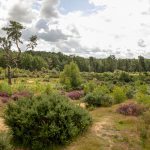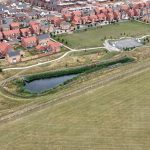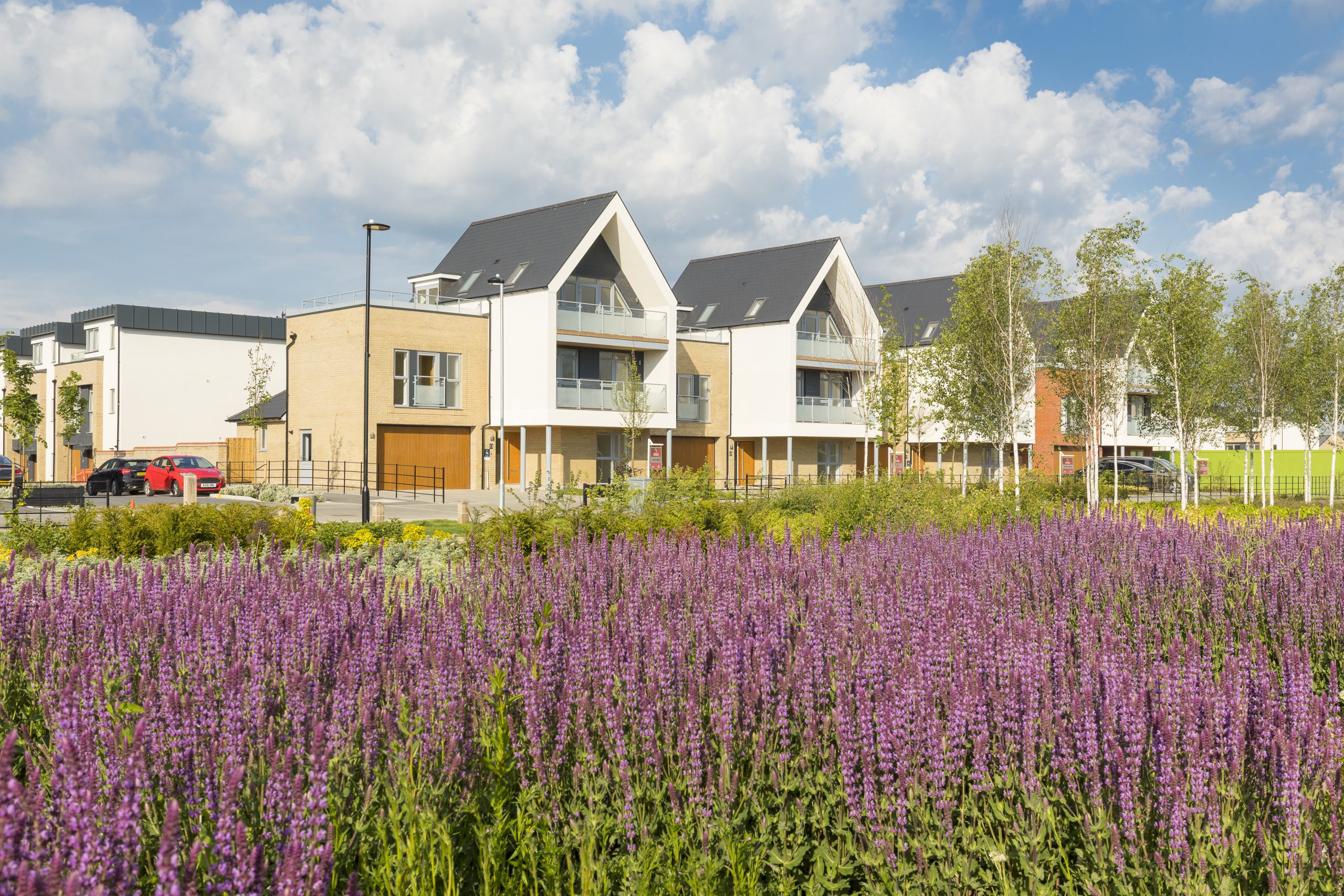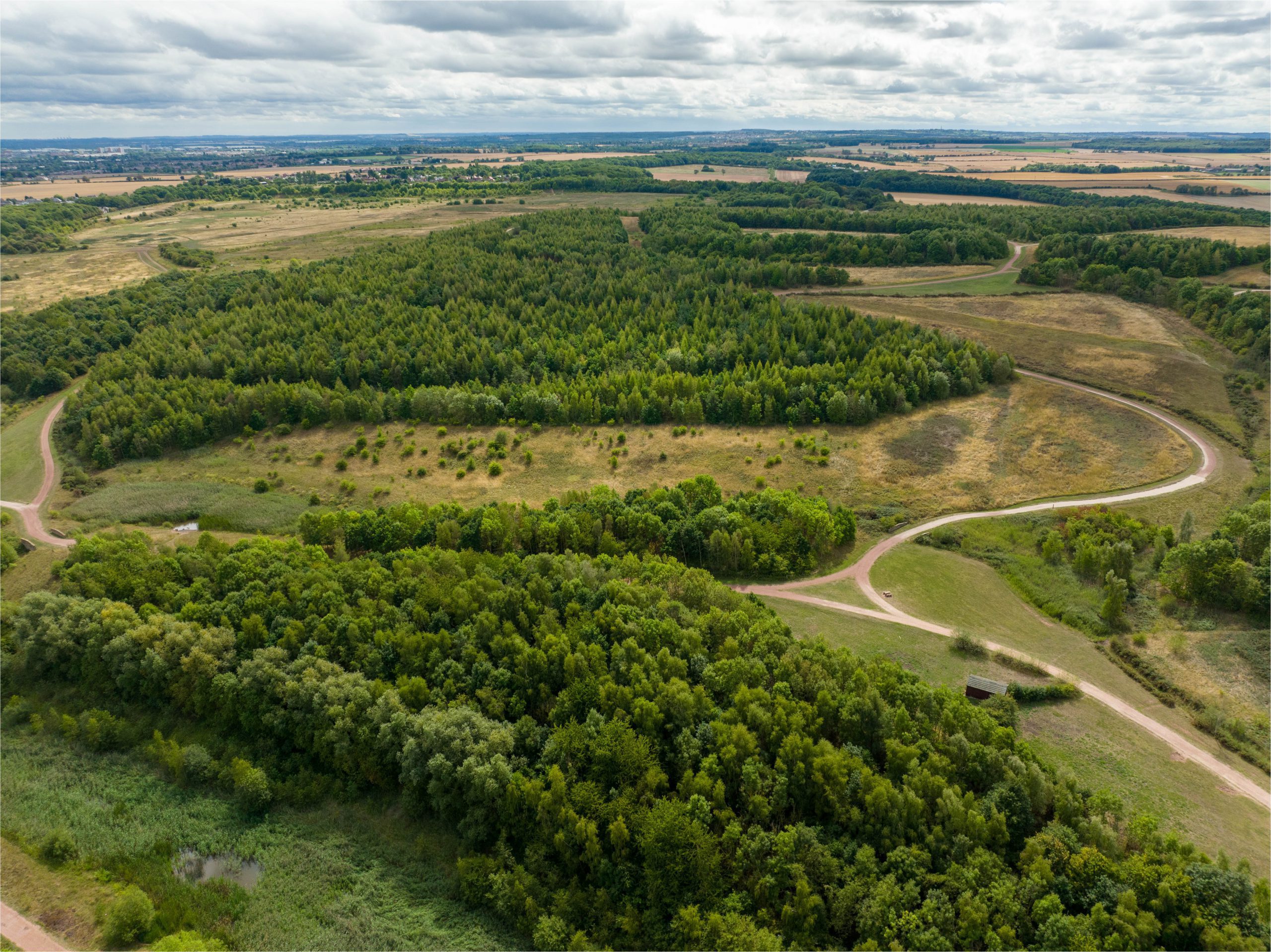
The Land Trust is seeing an increasing number of its pipeline SANG incorporating BNG into design and management plans in order to achieve the necessary gain in biodiversity for the related development. In some instances, developers are seeking to deliver more gains than are required with a view of trading excess Biodiversity Units (BU) to third parties which has been confirmed to be acceptable in the Government’s recent response to the January 2022 Mandatory BNG Consultation.
Whilst Natural England’s Thames Basin Heath Special Protection Area (TBH-SPA) SANG Guidelines 2021 confirm that BNG can be delivered on SANG, there is no formal government guidance covering SANG and BNG across England.
Therefore, I thought it would be useful to outline the implications of the key differences between SANG and BNG and based on Land Trust’s project experience, how they could work together.
Can SANG and BNG work together?
Although the principle of BNG on SANG is accepted by Natural England at a strategic level, from project experience, we are aware of certain Case Officers taking the stance that specific SANG could not be used for BNG. It therefore seems that at this early stage, Natural England’s stance on this topic, as ever, is dependent on the view of the individual Natural England Case Officer.
The TBH-SPA SANG Guidelines 2021 and site-specific Natural England consultation on SANG across England, confirms that BNG on SANG is acceptable subject to additionality being proven over and above what would have otherwise been required to meet minimum SANG policy requirements.
Government recently clarified that BU derived from mitigation and compensation sites for protected species and protected sites, e.g. SANG and nutrient sites, can only be used to achieve no net loss, and therefore at least 10% of the required 110% post development biodiversity score must be accounted for elsewhere e.g. onsite habitat within the development redline or BU purchased from third party providers.
Both of the above caveats indicate that measured BNG on SANG must be additional to that which would have already occurred without the Environment Act and mandatory net gain, which is a theme predicted to run throughout the much-needed formal government advice.
Difference in scale
Government recently re-confirmed that BNG will be mandatory for major developments and smaller developments under the Town and Country Planning Act (1990) from November 2023 and April 2024 respectively and National Significant Infrastructure Projects no later than 2025 to offset the unavoidable biodiversity losses caused by new developments.
Whereas SANG is only required to mitigate increased recreational impacts caused by net new residential developments within defined Zones of Influences around certain Special Protection Areas (SPAs) and Special Areas of Conservation (SACs) that are deemed by Natural England to be at risk of harm caused by recreational pressures. Therefore, whilst BNG will be national, the ability to deliver BNG on SANG will be regional to affected SPAs and SACs such as TBH-SPA and more recently the Chiltern Beechwoods SAC.
Proximity to development
Following the mitigation hierarchy, offsite BNG should be a last case resort after the developer has sought to avoid, minimise and offset biodiversity losses onsite. Whilst the Biodiversity Metric favours offsite BNG in the same National Character Area and Local Planning Authority (LPA) boundary equally, and Government’s BNG consultation response suggested that BU can be traded ‘anywhere in England’, it is apparent that LPAs will seek to ensure the biodiversity gains are delivered within the same LPA boundary where losses are incurred.
The rules around SANG are more straight forward, a developer can choose to deliver SANG onsite or offsite with no specific policy preference between the two. Offsite SANG have catchments, which define the distance in which developments relying on it for mitigation must fall and is determined by size of the SANG . The largest catchment is 5km from the outer edge of the SANG which is considerably smaller than LPA wide catchments likely to be awarded to offsite BNG, although SANG capacity trading can take place cross LPA boundaries.
Therefore, should a developer be seeking to purchase both BU and SANG capacity, the nuances around the rules of proximity to development, may limit their ability to buy both from one site.
Duration
SANG must be funded and managed in perpetuity, which is defined as 80-125 years depending upon the planning policy of individual the LPA. The minimum length of time to fund and manage BNG is 30 years and we are yet to see whether any LPAs will seek to require a period longer than the minimum.
Management requirements
The longer management requirement of SANG means that only certain organisations are approved as appropriate bodies to own, and fund SANG in perpetuity. Consequently, not every landowner can qualify. There does not seem to be this level of ‘gate keeping’ concerning suitable bodies to own and deliver BNG land.
Whilst it is desirable to enhance and conserve biodiversity on a SANG, the primary purpose is to deliver a site for public recreation. Adding BNG into designs and management plans will increase capital and management costs compared to a standard SANG and this should be considered from the outset.
Value
Both SANG and BNG have a value. SANG capacity trades per dwelling, whereas it is predicted that BNG will trade per BU.
Comparable values between SANG and BNG are hard to summarise as they depend upon regional markets, most of which have yet to be established for BNG.
The value of SANG capacity ranges between £50,000 – £500,000 + per hectare dependent upon the region.
At the higher end of delivery, BU could be secured up to 8 BU per hectare. Based on recent quoted BU values of £10,000-£25,000 quoted across England, this suggests the most opportune BU scenarios could achieve a value of £80,000 – £200,000 per hectare.
The figures referred to above are based on our general experience in the market. They should not be relied upon and interested parties must seek their own advice in each instance.
Influence of LPA
In both instances the private market value will likely be led by the price that is charged by LPAs. This is often the case for SANG unless the LPA has no suitable SANG capacity and, in those regions, developers can set the value for themselves.
We are also seeing an increasing number of LPAs prepare to offer their own BU in the open market. Whilst a LPA cannot show preference towards their own BU, if a Developer is able to purchase BU from the LPA, this may be seen as the path of least resistance and be favoured by developers.
To remain competitive, private suppliers of BU will be required to charge a price per BU equal to or less than the LPA price. With the recent confirmation that BUs will be subject to VAT, unless it is confirmed that the VAT is recoverable, to remain competitive, private suppliers of BU may have to charge 20% less than LPAs to account for the VAT not charged by LPAs.
Land Trust
The Land Trust is approved to be an appropriate body to own and manage SANG and is preparing to deliver onsite and offsite BNG across England, making us an ideal partner to assist developers and landowners in combining the two and maximising the value of their land. For further advice on SANG and BNG, please contact Joe Heath, Head of Environment and Biodiversity at the Land Trust.
joeheath@thelandtrust.org.uk
[1] Developments of < 10 dwellings can purchase SANG capacity from any SANG within the same district or adjoining district.

Whilst there is debate about whether onsite or offsite BNG is best as proven by our recent BNG research most future developments will incorporate onsite BNG and therefore its management will be a key consideration for developers and Local Planning Authorities (LPA) across England.
Land Trust recently surveyed 84 house builders and land promoters about the challenges of mandatory BNG. When asked how their organisation planned to manage and fund onsite BNG long term, the most popular response (43%) was to ‘transfer the land into third party management companies (Man Cos) that fund the onsite BNG via a service charge, paid for by residents’.
Passing the responsibility for long-term management of BNG to Man Cos funded by service charge, relinquishes the developers of ongoing liabilities and long-term management costs, so it is unsurprising that it will be the preferred option.
Green Infrastructure funded by service charge is becoming increasingly common on new residential developments and there are various Man Co structures with different governance, experience and safeguards, and this raises questions over capability and suitability for long-term BNG management. 42% of respondents to Land Trust’s survey, identified ‘availability of an appropriate management body’ as being a challenge to BNG suggesting the industry share the same concerns.
A structure favoured by developers is a Resident Management Company (RMC) where homeowners buy a share of the Man Co at the time of purchasing their new homes, and can volunteer to be Directors who oversee the administration of the RMC and site management.
With a high turnover of homeowners and Directors with varying degrees of relevant experience, it will be difficult to ensure a consistent or effective governance approach to management over 30 years. This raises concerns as to whether the RMC model can always ensure the delivery of the relevant Biodiversity Maintenance and Monitoring Plan (BMMP). Should the BMMP not be adhered to and the target habitat and conditions are not met, will the residents, as shareholders, then be liable for potential penalties or enforcement by the LPA? Is this fair?
Delivering BNG over 30 years is a significant responsibility and LPAs will be looking for assurances of delivery. For this reason, LPAs may require step-in rights and bond payments, should the newly-created Man Cos cease to operate and/or fail to deliver the BNG. This should be a consideration for developers and LPAs alike.
The skillset of typical Man Cos and their appointed contractors is primarily related to manicured amenity spaces, which is not comparable to what is required under a BMMP.
The biggest opportunity by far is that service charge provides a ring-fenced and ‘in perpetuity’ funding model for BNG. Should the challenge of governance be overcome, a credible and experienced property manager can facilitate the long-term delivery of BNG, going far beyond 30 years, and potentially in perpetuity.
With its extensive experience in all kinds of habitat management and the administration of service charge against over 7,000 residential properties, the Land Trust, via Land Trust Residential Services Ltd, can act as a Man Co capable of effectively delivering a BMMP funded by service charge.
We are willing to take on all responsibility relating to BNG and will manage it in partnership with residents, allowing them to play an involved role in its management with none of the associated liability, removing the reputational risk for developers.
As a regularly audited charity, we have strong governance, experience and safeguards, and a robust level of financial security offering assurances to developers and LPAs alike.
Further insight into Land Trust’s approach to BNG is summarised within our revised BNG leaflet . For more information, please contact:
Joe Heath, Environmental Lead
joeheath@thelandtrust.org.uk


If you have any questions or queries about what we do or how to go about working with us we'd love to hear from.
Contact usWe are always on the look out for enthusiastic, committed people who want to make a real and lasting difference in their local community.
Get Involved